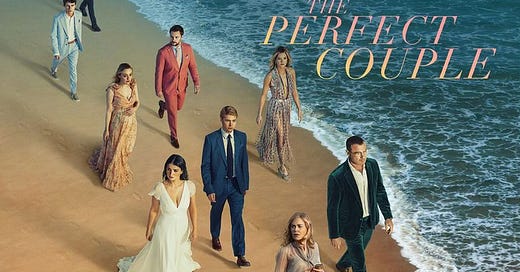I just watched The Perfect Couple on Netflix. Actually I started watching it, and then stopped to read the book, and then went back and finished watching the series. Going back and forth between a book and its TV or film adaptation is probably my own weird obsession, because of all the years of book adaptation I did for studios. But I just love looking …
Keep reading with a 7-day free trial
Subscribe to Screenwriting Tricks for Authors to keep reading this post and get 7 days of free access to the full post archives.



